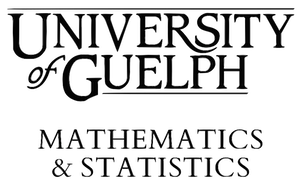Summerlee Science Complex Room 1511
SPEAKER: HERMANN EBERL
ABSTRACT:
In principle, biofilm reactors in wastewater engineering are designed
such that mass conversion and substrate removal take place in the biofilm
phase. However, in the practical realisation, due to detachment and
attachment processes in many instances also unattached bacteria a present
in the system. We develop a biofilm reactor model that accounts for these,
for a system inspired by Moving Bed Biofilm Reactors. On the reactor scale
this is modelled by ordinary differential equations, similar to chemostat
models. In order to account for mass transfer limitation in the
biofilm matrix, however the biofilm phase needs to be spatially resolved.
In the single species case with one growth limiting substrate those
spatial effects are described by a two-point boundary value problem for
the substrate concentration in the biofilm. This model can formally be
reduced to an ODE and studied with elementary techniques. In the multi-
species case the reactor scale ODE model is coupled with a hyperbolic free
boundary value problem for the biomass components, coupled with two point
boundary value problems for dissolved substartes in the biofilm. We will
derive this model and study it numerically. This is joint work with Alma
Masic.
